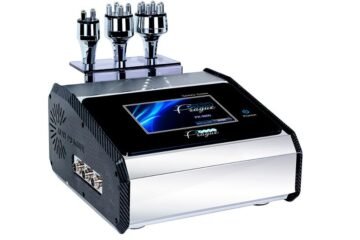Mastering 3D product modeling is crucial in design for meeting increasing demand. This blog discusses five essential techniques, from polygonal modeling to 3D scanning, that enhance creativity, collaboration, and product delivery to captivate audiences in the dynamic design world.
Why 3D Modeling Matters in Design
Now, in computer-based technology, 3D product modeling is part of the minimum of any design. This is because the sales or manufacturing and even gaming visualization of the product would receive a very competitive edge by presenting product models and ideas in complete lifelike detail.
3D product animation services have helped to improve collaboration, communication, and feedback between designers, engineers, and stakeholders. Clients are more involved and interested in exploring virtual designs, hence ensuring more efficient workflows and innovative products.
- Polygonal Modeling: The Building Blocks of 3D
This is polygonal modeling where there is the making of objects through vertices that get connected to make polygons, such as triangles or quadrilaterals. It grants accessibility and control toward its usage in creating many different designs; thus, knowing how to do this helps a person create digital concepts effectively.
Essential Tools and Software
Tools: for such modeling, some essential tools include Blender, Autodesk Maya, and 3ds Max. It’s very potent as both a beginner and pro-friendly tool with powerful tools. Meanwhile, Maya is mostly preferred by industry professionals because of its advanced features. Mastery over these tools is mainly the key to the creation of different objects.
Tips for Creating Complex Shapes
When creating complex shapes with polygonal modeling, begin with simple forms and gradually increase complexity. Use reference images for design guidance. Utilize modifiers and sculpting tools to enhance models. Keep topology clean for future workflow.
Common Mistakes to Avoid
Some of the common mistakes by experienced designers in polygonal modeling include planning error, dense geometry, and failure to save a backup. To avoid the above pitfalls, optimization and planning must come first to make the whole process more efficient and rewarding.
- NURBS Modeling: The Curve of Innovation
NURBS are essential in 3D product design, creating smooth surfaces using curves instead of vertices like polygonal modeling. Ideal for precision designs like automotive bodies and character animations, NURBS offer flexibility and creativity for visually appealing results.
When to Use NURBS Over Polygons
Choosing between NURBS and polygonal modeling depends on project requirements. NURBS excel at organic shapes and detailed surfaces, while polygons are better for angular forms. Leveraging NURBS strengths enhances workflow and enables tackling diverse design challenges confidently.
Creating Smooth and Detailed Surfaces – 3d Product Modeling
NURBS modeling allows for effortless creation of smooth and detailed surfaces by controlling underlying curves with precision. Starting with sketches and utilizing tools like trim and fillet can enhance designs. Our 3D modeling services focus on curve flow and create high-quality, seamless surfaces for professional models with added functionality.
Read Also: How to make 3D Modeling Opening Wings
Real-World Applications of NURBS Modeling
NURBS modeling offers a versatile and powerful tool for various industries. In the automotive field, designers use NURBS to create aerodynamic car bodies. TVS Cube – 3D product rendering services is also widely used in consumer product design, animation, and game development for creating sleek and lifelike shapes. Mastering NURBS modeling can open doors to high-demand sectors.
- Sculpting: The Art of Organic Forms
Digital sculpting merges traditional artistry with modern technology, mimicking working with clay for creating intricate, lifelike details. It offers unparalleled freedom for designers to express creative visions and push boundaries.
Key Tools and Software for Sculpting
Successful digital sculpting requires the right tools like ZBrush, Mudbox, or Blender. ZBrush is known for handling large polygon counts efficiently, while Blender offers a free alternative with a supportive community. Mastering these tools is essential for creating intricate sculpting projects.
Techniques For Realistic Textures And Details – 3d Product Modeling
Utilize alphas for surface details, layering for depth, polygroups to isolate regions, proper lighting for enhanced perception, and practice for skill refinement and unique style development in digital sculpting for realistic textures and details.
Sculpting for Game Design vs. Product Visualization
Both game design and product visualization require different approaches to sculpting. In game design, high-resolution models must be optimized for performance, balancing detail with polygon count. Conversely, our product design services focus on accuracy and realism for marketing purposes. Understanding these distinctions is crucial for tailoring sculpting techniques to specific project needs.
- Parametric Modeling: Flexibility Meets Precision
Parametric modeling tends to revolutionize design, allowing for the creation of intricate geometries that adapt to defined parameters. TVS Cube digital product design services streamlines design for the fact that it establishes relationships between elements, enabling the designer to perform real-time updates and to make effortless evolutions in the company 3d model.
Advantages of Using Parameters in Design
Parametric modeling offers flexibility, allowing quick design iterations without manual adjustments. It promotes innovation by easily exploring variations and leads to unique solutions. Built on logical relationships, models are easier to maintain and modify, reducing errors and empowering creative exploration.
Software Solutions for Parametric Modeling
Parametric modeling can only be very useful if utilized with the proper kind of software. Each software has its power, especially with the likes of Autodesk Revit, SolidWorks, and Rhino, each being good for a different kind of design. The best mastery of the execution of modern design will improve.
- The Basics of 3D Scanning Technology : Capturing Reality
3D scanning revolutionizes object replication by capturing precise digital representations through laser beams or structured light. This technology quickly transforms physical items into detailed 3D models, benefiting engineering, product design, and art restoration projects.
Applications in Product Development
3D scanning is a versatile tool for product development, allowing designers to analyze existing items for dimensions and features. It is essential in industries like automotive and electronics for precise measurements and reverse engineering. TVS Cube – 3D modeling company Incorporates 3D scanning that can streamline prototyping workflows, saving time and reducing errors.
Best Practices for Effective Scanning
3D scanning requires best practices for accurate data. Lighting, cleanliness, and scanner choice are vital. TVS Cube 3D modeling companies take time, review data, and consider object size and complexity. By following these guidelines, achieve high-quality results with maximum effectiveness in 3D scanning.
Combining Scanning with Traditional Modeling Techniques
3D scanning complements traditional modeling by combining their strengths for efficient design workflows. Starting with a 3D scan, designers can modify the model in CAD software for greater creativity and flexibility. This hybrid approach captures intricate details and enhances design capabilities, allowing for a wider range of projects to be tackled confidently.
The Crux:
Mastering the top five 3D product modeling techniques is crucial for designers seeking success in today’s competitive landscape. From polygonal modeling’s flexibility to digital sculpting’s finesse, each method offers unique advantages. Incorporating NURBS, parametric modeling, and 3D scanning boosts efficiency and innovation. Embracing these techniques enhances creativity and versatility, enabling designers to meet diverse client needs.



